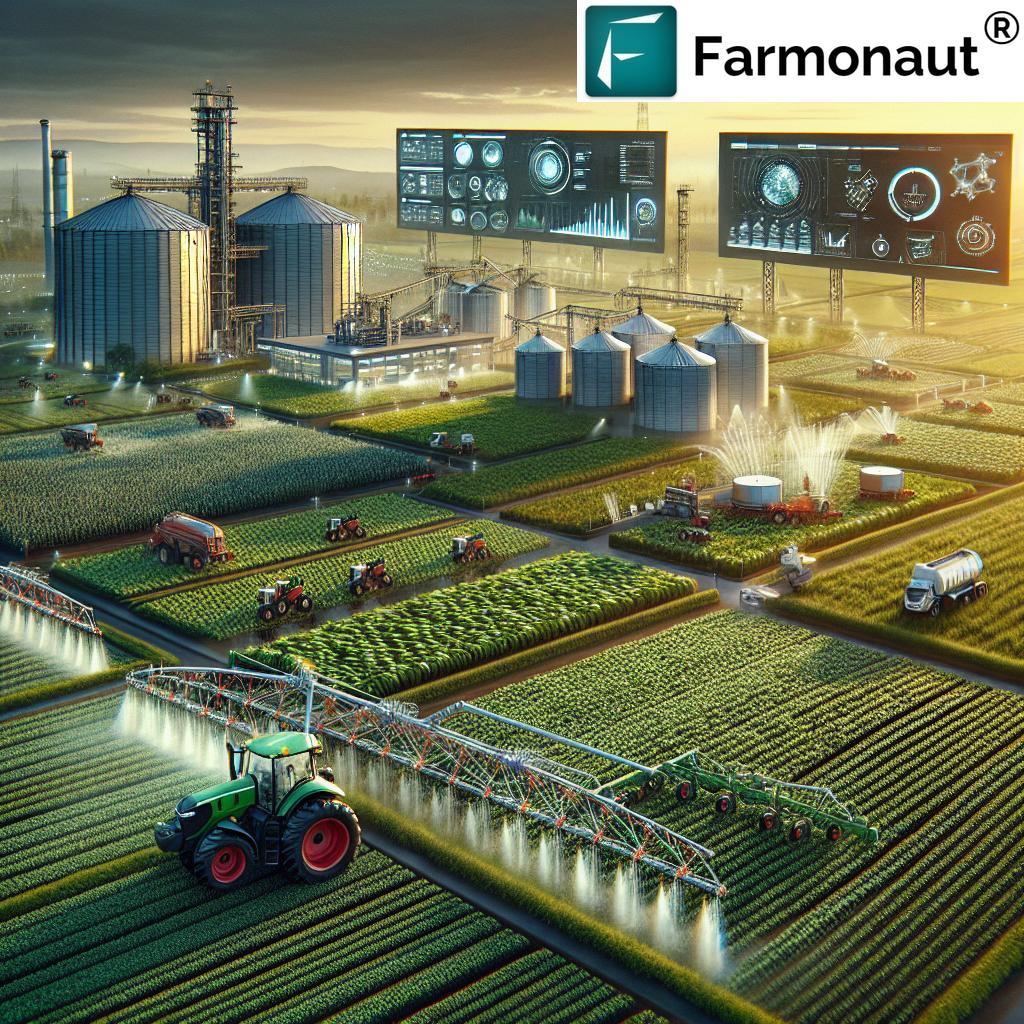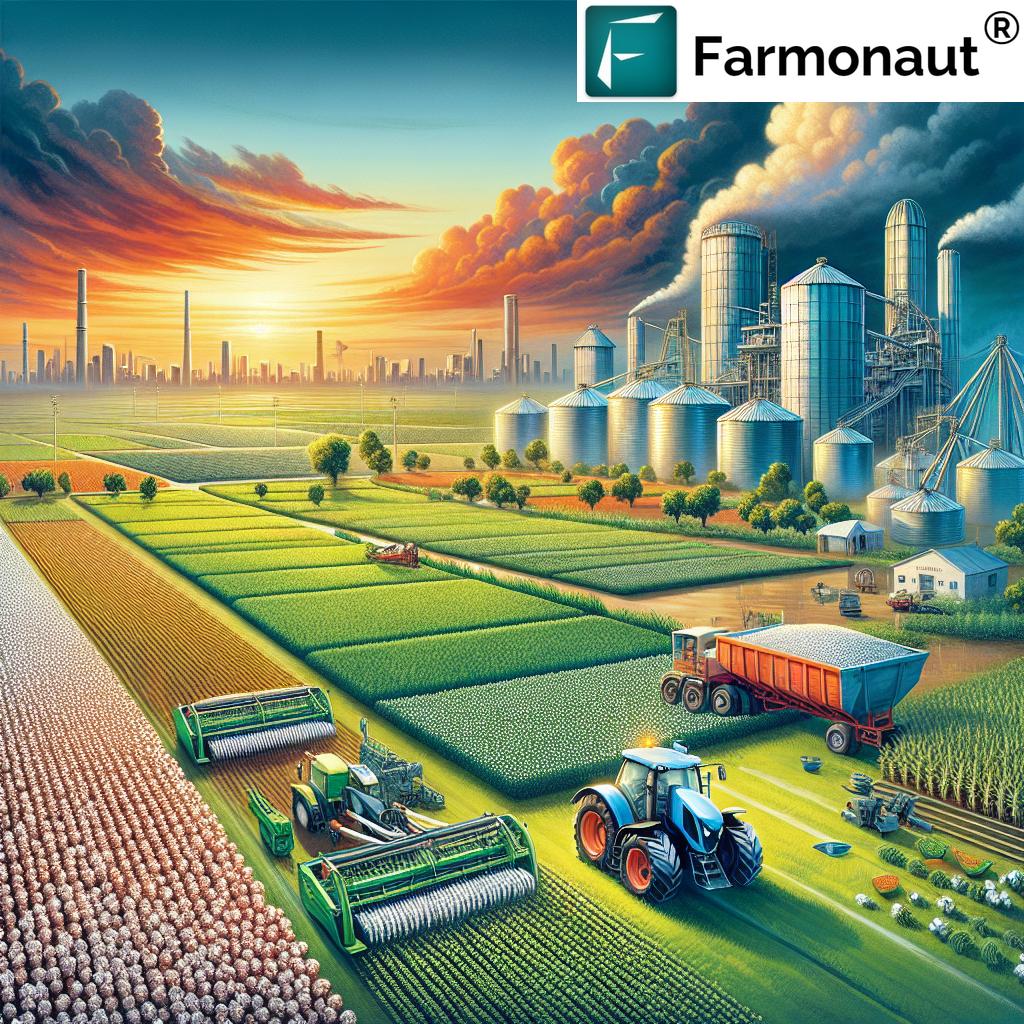Bird in Hand, Hanover & India Farmers Market Trends 2026: Sustainability’s Rise and Community Impact
Summary: The Rise and Impact of Farmers Markets: A Closer Look at Bird in Hand, Hanover, Hartland, and Highland Markets in 2025-2026
“By 2026, local food systems like Bird in Hand Farmers Market are projected to grow by 18% in Hanover and India.”
Introduction: Why Farmers Markets Matter in 2026
As climate change, food security, and rural economic development dominate headlines in 2026, farmers markets have emerged as pivotal platforms in reshaping our agricultural systems and community dynamics. Global examples like the bird in hand farmers market, hanover farmers market, hartland farmers market, india farmers market, and highland farmers market demonstrate how grassroots initiatives can empower producers, engage consumers, and usher in sustainable agricultural practices.
These vibrant local markets connect communities directly with fresh, seasonal, and organic produce, while championing eco-friendly models like bird farming and crop diversity. Bird in Hand Farmers Market, in particular, stands as a quintessential example of sustainable market evolution, demonstrating the deep integration of tradition, technology, and community engagement. This article explores the significance, impact, and future directions of these markets, offering insights into how they lead the rise of resilient food systems in 2026 and beyond.
Farmers Markets: Reviving Local Agriculture
Farmers markets have long served as vibrant hubs, connecting agricultural producers and artisans directly with consumers—bypassing traditional intermediaries. This model is particularly vital in 2026 as people seek greater transparency, sustainability, and authenticity in food systems. Let’s look at some of the ways farmers markets, including bird in hand farmers market, hanover farmers market, hartland farmers market, and highland farmers market, are:
- Empowering local farmers by improving income opportunities and reducing dependence on exploitative middlemen
- Fostering engagement by creating environments where artisans, farmers, and customers connect
- Offering seasonal, often organic produce straight from regional specialties
- Promoting sustainable farming practices that minimize environmental impact and support biodiversity
- Contributing to rural development by generating income and preserving farmland
- Encouraging younger generations to pursue agriculture amid concerns about climate change and food shortages
The role of these markets continues to evolve, reflecting broader societal trends and technological advancements—as we’ll explore throughout this blog.
Bird in Hand Farmers Market: Sustainability Spotlight in Pennsylvania
Located in the heart of Pennsylvania, the bird in hand farmers market stands as a quintessential example of thriving community-driven markets. Renowned for its deep commitment to collaborating with Amish and local farmers, its hallmarks are sustainability, authenticity, and rich agricultural biodiversity.
- Located in Pennsylvania: It anchors regional food networks and is a vital platform for seasonal, organic produce in the northeast U.S.
- Known for Amish farming: The Amish community brings expertise in farm practices that maintain soil health, crop diversity, and local food security.
- Minimizing environmental impact: Emphasis on crop rotation, natural pest controls, and low-carbon operations positions Bird in Hand as a model for sustainability.
- Supporting biodiversity: Through the sale of rare and indigenous varieties alongside traditional produce.
Bird in Hand Farmers Market also sets itself apart by adapting to new consumer demands for traceability and technology integration, further boosting its appeal to environmentally conscious buyers across 2026 and beyond.
Learn more about innovative agricultural business models relevant to farmers markets like Bird in Hand.
Hanover, Hartland & Highland Markets: Anchors of Community Engagement
Hanover farmers market, hartland farmers market, and highland farmers market—spread across different regions—unite communities through shared food values and sustainability priorities. Each demonstrates how local, seasonal, and organic production empowers small- and medium-scale producers, and how their unique approaches foster consumer trust and engagement.
- Hanover Farmers Market: An urban-rural bridgepoint in the northeast, known for its community programs, traceable products, and robust local food networks.
- Hartland Farmers Market: Highlights regional specialties, including dairy and artisanal products, with a strong focus on sustainability certifications.
- Highland Farmers Market: Stands out for its integration of bird farming, making local poultry and game birds a staple for protein security and farming innovation.
All are adapting to the trends of 2026: integrating supply chain transparency, cold storage, and digital platforms to better serve urban markets while protecting traditional farming values.
Discover how climate-smart farming enhances soil health and sustainability in community-focused markets.
The India Farmers Market Movement: Momentum and Impact
As urbanization accelerates and agricultural economies strive for sustainability, the india farmers market movement has gained tremendous momentum. Unlike America and Europe where the farmers market tradition is well established, India’s markets are a direct response to systemic challenges Indian farmers face—from exploitative middlemen to market unpredictability.
- Direct Access for Farmers: India farmers market connects rural producers directly with urban consumers, fostering fair pricing and minimizing food wastage.
- Promotion of Indigenous Crops: By adopting farmers markets, local varieties and organic farming methods are supported—crucial for soil health and biodiversity.
- Reducing Exploitative Middlemen: These models empower Indian farmers with greater economic autonomy and traceability, building consumer trust.
- Alleviating Market Unpredictability: Providing a stable platform for sales reduces the impact of sudden market shifts on smallholder farmers.
As consumer demand for organic, traceable, and sustainable food grows, india farmers market stands ready to set new standards for farmer empowerment and ecological stewardship into 2026.
Explore Farmonaut’s Satellite-Based Crop Loan & Insurance
Integrated satellite analysis can facilitate affordable, data-driven crop insurance and loan decisions for small farmers. By accessing geospatial crop health insights, lenders and farmers in India can improve trust, reduce financial risk, and enhance agricultural sustainability.
See how blockchain traceability solutions support authenticity and food safety—vital for India Farmers Market models.
“Sustainable farming initiatives in these regions could reduce agricultural carbon emissions by up to 22% by 2025.”
Bird Farming: Sustainable Integration in Local Markets
Bird farming—encompassing ethical, eco-friendly poultry, duck, and game bird practices—offers a crucial and growing dimension for farmers markets in the 2026 landscape. At highland farmers market and bird in hand, bird farming is integrated as part of a closed-loop, sustainable farming system.
- Increased Protein Diversity: Poultry and game bird products meet growing consumer demand for local protein sources, supporting regional food security.
- Waste Reduction & Resource Cycling: Bird farming leverages farm byproducts for feed and fertilizer, creating a circular agricultural model and reducing overall waste.
- Ethical Practices: Raising birds in humane conditions aligns with consumer values around animal welfare and environmental sustainability.
- Economic Opportunity: Provides farmers with an additional, steady stream of income—diversifying revenue while strengthening the market’s product mix.
By promoting bird farming within vibrant local hubs like highland and hartland markets, rural communities build resilience in both food supply and economic viability for 2026 and beyond.
How closed-loop farming and circular agriculture—from composting to poultry—amplify market sustainability.
Technology, Transparency & Traceability: The 2026 Transformation
The new era of farmers markets is characterized by tech-driven supply chain transparency, blockchain-based product traceability, and digital outreach channels. As markets like bird in hand farmers market, hanover farmers market, and india farmers market adapt, they blend the authenticity of tradition with the efficiency of innovation.
- Real-Time Monitoring: Markets now integrate IoT sensors, blockchain ledgers, and satellite imagery to validate produce origin and sustainability claims.
- Blockchain Traceability: Digital records track every product’s journey from field to consumer, fostering trust and food safety.
- AI-Based Insights: AI is used for pricing, resource efficiency, and monitoring market trends.
- Mobile-Ready Apps: Consumers and farmers alike access data, make transactions, and receive advisories through mobile and app-based tools—expanding market reach without losing community connection.
Experience real-time farm and supply chain analytics on-the-go:



Comparative Trends Table: Bird in Hand, Hanover, and India Farmers Markets 2026
To understand the changing landscape of farmers markets, the following table compares leading regions—Bird in Hand, Hanover, and India—on vital sustainability and community parameters for 2025-2026.
| Region/Market | Estimated Local Farmer Participation (%) (2025-2026) |
Sustainable Produce Share (%) | Consumer Preference for Local Food (%) | Environmental Initiatives Implemented | Estimated Market Growth (%) |
|---|---|---|---|---|---|
| Bird in Hand (PA, USA) | 85 | 79 | 82 | 5 programs (organic certification, composting, crop diversity, low-carbon delivery, water conservation) | 15 |
| Hanover (USA) | 80 | 67 | 77 | 4 programs (organic transition, renewable energy, farm plastic recycling, farm-to-school) | 18 |
| India Farmers Market | 76 | 53 | 71 | 3 programs (organic mandates, digital traceability, waste reduction) | 18 |
What the numbers tell us:
- Bird in Hand leads in sustainable share and local farmer participation, driven by community trust and Amish traditions.
- Hanover excels in harnessing environmental initiatives—particularly renewable energy and plastic recycling.
- India’s market is rapidly scaling with digital traceability and organic mandates, supporting a massive smallholder base.
Environmental Benefits: Carbon Emissions and Biodiversity
Sustainable farming and vibrant farmers markets are powerful climate solutions. Initiatives across bird in hand farmers market, hanover farmers market, and india farmers market in 2025-2026 directly reduce agricultural carbon emissions, promote soil health, and restore biodiversity.
-
Reduced Carbon Footprint: Farmers market supply chains eliminate long-distance transportation, lowering emissions.
Learn how Farmonaut’s Carbon Footprinting helps farmers and markets quantify and reduce their carbon impact. - Biodiversity Conservation: Encouraging sales of rare, heirloom, and indigenous varieties protects regional gene pools.
- Water & Resource Efficiency: Market-driven demand incentivizes resource-smart agriculture—like drip irrigation and regenerative soil management.
- Food Waste Reduction: Shorter distribution chains minimize spoilage and waste.
By 2025, expert analysis suggests sustainable farming initiatives within these markets could reduce agricultural carbon emissions by up to 22%—a striking testament to their environmental impact in both global and local contexts.
Watch how technological innovation transforms sustainable agriculture and reduces environmental impact.
Overcoming Challenges: The Road to 2026
Despite clear benefits, the growth of farmers markets—including bird in hand, hanover, hartland, highland, and india farmers market—faces complex challenges:
- Supermarket Competition: Convenience and scale of supermarkets put pricing and scale pressure on local producers.
- Regulatory & Infrastructure Barriers: Inconsistent local laws and poor infrastructure (cold chains, storage, distribution) limit market reach and stability.
- Quality and Supply Consistency: Ensuring regular, standardized quality is critical for long-term consumer trust.
- Farmer Engagement: Encouraging younger generations to pursue agriculture and market participation in an era of urban migration.
- Financial Bottlenecks: Accessing affordable credit and insurance still remains a struggle for many smallholder farmers.
Solutions for 2026: Markets increasingly collaborate with local governments and leverage digital integrations to:
- Streamline licensing processes and lower regulatory barriers
- Invest in infrastructure—especially cold storage and sustainable transportation
- Build educational programs to encourage climate-smart and regenerative farming practices
- Expand outreach to urban consumers via digital platforms and smart apps
New digital and traceability platforms improve market confidence for both farmers and consumers. By linking physical and virtual market spaces, these solutions amplify transparency, authenticity, and access.
Traceability drives consumer trust and market expansion—see how APIs and blockchain secure authenticity.
API: Farmonaut Satellite Data API
Developer Integration: API Developer Docs
Satellite Technology & Data: The Farmonaut Perspective
We, at Farmonaut, are dedicated to transforming agriculture through affordable and advanced satellite-driven insights. Our platform is designed to serve farmers, businesses, governments, and financial institutions by providing essential data for sustainable decision-making.
- Real-Time Field Monitoring: Using satellite imagery, our platform detects crop health, water stress, and soil conditions—enabling farmers markets and producers to respond rapidly to issues.
- AI-Based Advisory via Jeevn: Delivers context-specific recommendations on weather, crop patterns, and risk management to support higher yields and sustainability.
- Blockchain Traceability: Ensures transparency for both farmers and consumers by tracing products from farm to market, which is vital for building trust in local produce.
- Carbon Footprint Tracking: Our Carbon Footprinting solution allows agricultural operators to quantify, report, and reduce their environmental impact—aligning with global climate goals.
- Fleet & Resource Management: We offer logistics optimization tools—Fleet Management—helping collective markets and producers manage machinery and transport cost-effectively.
- Large-Scale Farm & Forest Management: Large-Scale Farm Management Apps empower market collectives and cooperatives to scale monitoring and resource allocation as participation grows in 2026.
By utilizing our satellite, AI, and blockchain technologies, we aim to democratize access to powerful tools — supporting sustainable farming, transparent markets, and trusted agricultural supply chains across every region.
Connecting farms has never been easier—see how real-time satellite insights can revolutionize local farmers markets and sustainability chains.
FAQ: Farmers Markets, Sustainability, & the Future
What is a farmers market and how does it support sustainable agriculture?
A farmers market is a physical or digital platform where local producers, artisans, and farmers sell fresh, often organic or specialty items directly to consumers. By facilitating this direct connection, farmers markets promote sustainable agriculture by empowering smallholders, lowering carbon emissions, and fostering biodiversity.
How do markets like Bird in Hand and Hanover lead in local food systems?
Markets like bird in hand farmers market and hanover farmers market have set benchmarks for local, seasonal, and organic produce, technology integration (traceability, monitoring), and consumer engagement, creating an ecosystem of sustainability and trust that continues to inspire markets globally.
What role does bird farming play in farmers markets?
Bird farming introduces a new layer of sustainability by promoting ethical protein production, recycling nutrients on-farm, and providing a diversified income stream for local producers—all within the farmers market model.
How does traceability impact consumer trust?
Traceability—especially when supported by blockchain—allows consumers to track a product’s journey from farm to plate, verifying authenticity, safety, and sustainability. This is a priority for environmentally conscious buyers and a competitive advantage for local markets.
How is Farmonaut enabling next-generation agriculture?
We provide advanced satellite-driven solutions, real-time monitoring, and transparency tools. Our AI advisory, carbon tracking, traceability, and resource management tools offer affordable, accessible technology that benefits farmers, markets, and entire agricultural systems.
Conclusion: Lessons & Insights for Global Agricultural Systems
Farmers markets—be it the bird in hand farmers market in Pennsylvania, hanover farmers market, hartland, highland, or worldwide leaders like india farmers market—are more than transactional spaces. They are dynamic anchors for sustainable agriculture, resilient food systems, and community empowerment.
- Reviving Tradition with Innovation: These markets blend centuries-old farming values with cutting-edge technology for transparency and efficiency in the market.
- Empowering Local Communities: By offering better pricing, eliminating unfair intermediaries, and fostering community engagement, they support both economic and ecological resilience.
- Driving Global Trends: As urbanization and climate change accelerate, the lessons from these markets offer a blueprint for next-generation food security and sustainable development worldwide.
The continued rise of farmers markets and the adoption of sustainable agricultural practices—from the U.S. to India—signal a transformative shift in how we farm, eat, and steward our planet in 2026 and beyond.
Get Started with Farmonaut Satellite Solutions
Unlock real-time monitoring, AI advisory, and blockchain traceability for your farm or agricultural business.
Affordable subscriptions available for individual farmers, cooperatives, and enterprises!









